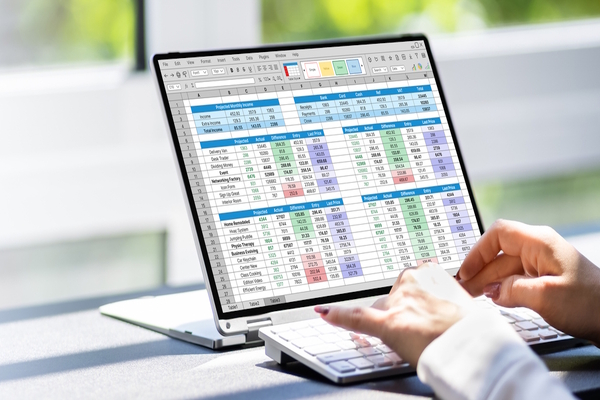Optimising the employee experience

David Bowman at Content+Cloud explains how technology can help employees and employers align over requirements for improving the employee experience
Employee experience (EX) platforms surged in popularity during the first lockdowns, as physical touch points needed to be replaced by digital engagements. With hybrid working becoming a permanent fixture, investing in employee experience platforms is more important than ever for those organisations wanting to retain talent and protect the well-being of their workforce.
However, according to recent Forrester research, there is still a difference between how successful employees and employers deem EX tools to be. Technology has become a key tool in how we work but choosing tools that hinder rather than empower employees to work effectively can have a negative impact on EX.
To improve employee experience, business leaders must move away from hastily implemented tools and instead focus on what employees want and driving engagement to help achieve business goals.
The importance of EX
Prior to the first lockdown much of the employee experience was driven by physical touch points. When lockdowns came into force, the digital elements of engagement became mission critical, propelling EX platforms to the forefront of the technology agenda. Today, with flexible hybrid working arrangements emphatically the norm, EX platforms are a business imperative.
Effectively digitising all touchpoints between employers and employees and enabling organisations to deliver what employees value most through a digital workspace is the essence of enabling a great EX. Further to this, a good EX platform should act as a supplement for the office as people increasingly split their time between working from home and their workplace, so ensuring as seamless an experience as possible across both contexts is essential.
With mental health and wellbeing becoming more of a focus for organisations, EX platforms can also help to deliver previously hidden insights that protect employees from negative working patterns. Features that flag when employees are working out of hours too much or leaving little time to focus or collaborate are just some examples that can protect employees against burnout.
In the age of ‘The Great Resignation’ fostering a positive EX is essential. Employees that don’t feel engaged will simply look elsewhere.
Technology debt and EX
To understand why EX platforms are so essential today, it’s important to understand the context that has made them so vital. With each technology implementation, it’s essential to consider the long-term value for a business, as fast deployments lead to technical debt.
This has become commonplace in the wake of the pandemic, during which remote working tools were implemented rapidly to maintain business operations without regard to EX.With so many new platforms and tools to manage, employees were overwhelmed, meaning the tools implemented to maintain and improve their experience had the opposite effect.
On some occasions, organisations looked to additional tools to combat this, but again, without effective implementation, the problem only grew.
EX leaders who want to use technology to boost the employee experience must remember that a successful implementation is only 20% technology and 80% adoption management. In short, throwing technology solutions at a problem without defining what problem needs to be solved will not have a positive impact.
Overcoming the EX disconnect with effective implementation
EX leaders and employees currently have different views when it comes to EX. Leaders believe that the tools and strategies that they have implemented are far more successful than employees deem them to be. According to Forrester, 77% of EX leaders think their organisation does a good job of helping employees manage their mental well-being. Just 47% of employees think the same, which illustrates a clear disconnect.
To bridge the gap, organisations must focus on the purpose and objectives of any technology implementation before introducing new tools. Instead of treating EX like a box-ticking exercise, EX initiatives should be aligned to business and employee needs. To ensure initiatives are built with the employee in mind, businesses must take time on user research to fully understand the implications for employees.
With AI-powered insights at the heart of many EX platforms, organisations now also have the benefit of seeing how EX tools are performing against KPIs determined by the user research phase. Employee satisfaction, employee mental well-being, work-life balance, productivity and engagement—factors that were previously difficult, even impossible, to track—can now be monitored.
With EX platforms, organisations can leverage AI-powered insight functionalities to provide a fuller view of satisfaction and well-being across their entire workforce – and identify areas that need attention.
Hybrid working is a new model for many organisations and getting to grips with its full implications, for both employees and day to day business operations, is still a challenge. With the right technology, implemented effectively, employees are empowered to work effectively from wherever they are.
With EX tools, organisations will enhance employee engagement and skills development, as well as improve well-being, but before investing in EX technologies and initiatives, business leaders must define their long-term strategies and objectives to ensure implementations complement both their business roadmaps and employees’ expectations.
David Bowman is Product Director for Fresh at Content+Cloud
Main image courtesy of iStockPhoto.com

Business Reporter Team
Most Viewed
Winston House, 3rd Floor, Units 306-309, 2-4 Dollis Park, London, N3 1HF
23-29 Hendon Lane, London, N3 1RT
020 8349 4363
© 2025, Lyonsdown Limited. Business Reporter® is a registered trademark of Lyonsdown Ltd. VAT registration number: 830519543





